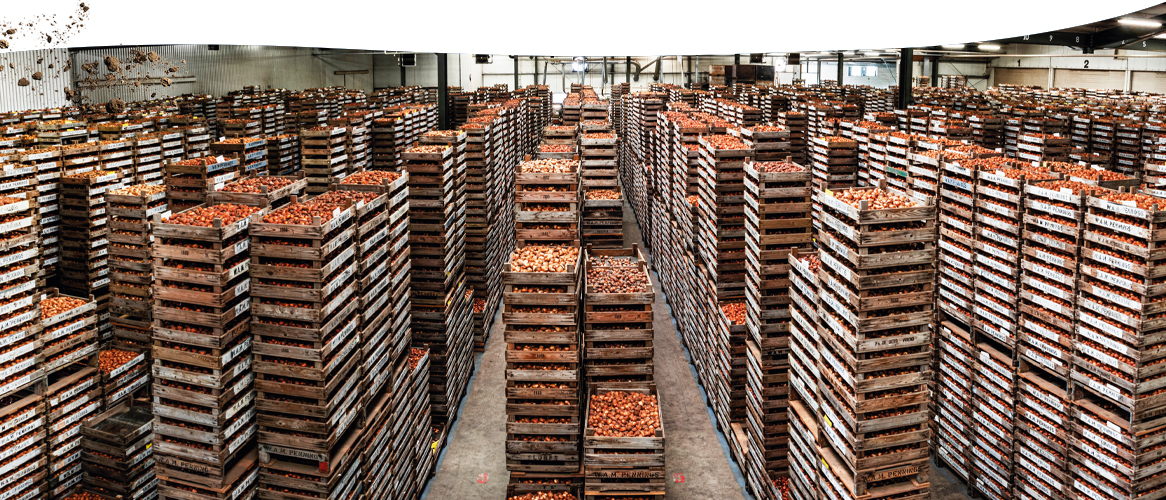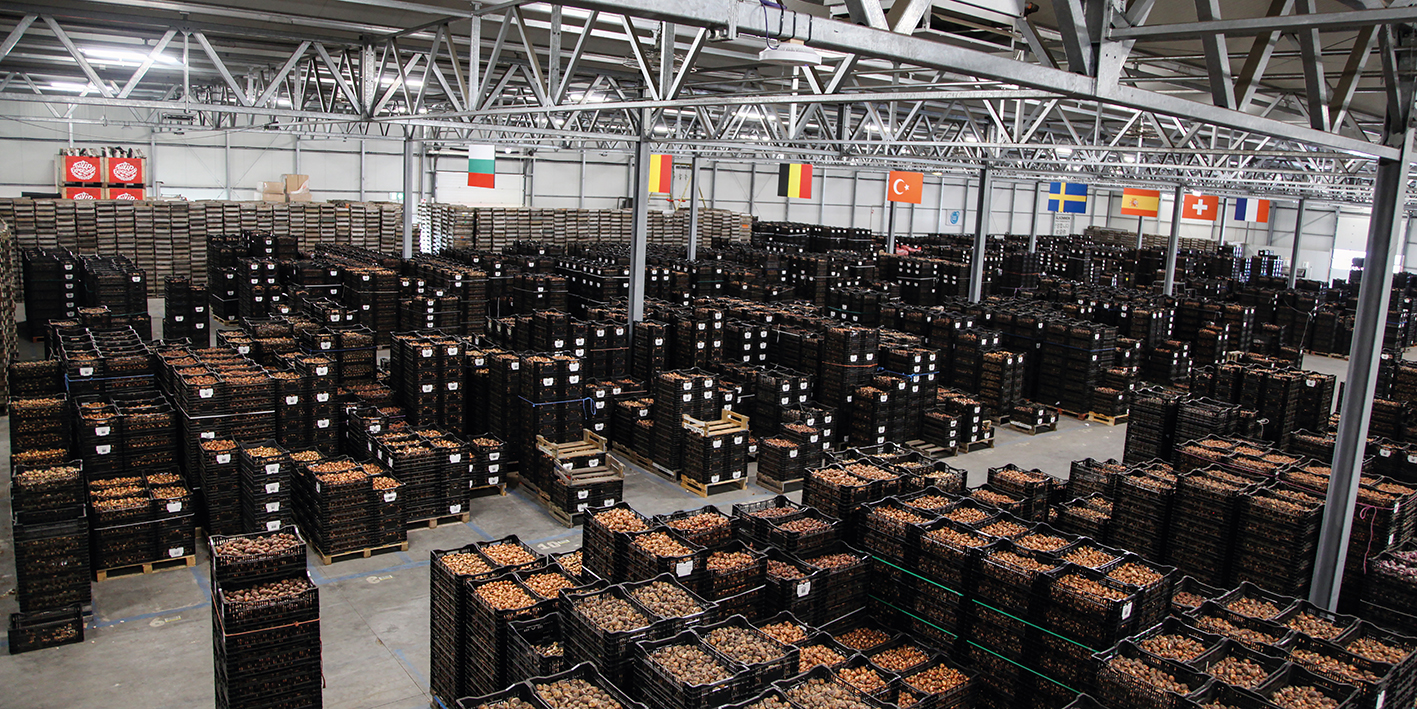Pealing, sorting, counting and warehousing

Just a short explanation about the growth of the bulb. The bulb in the ground is renewing itself. The bulb that goes into the ground in the autumn is not the same that is harvested in the summer. The bulb contains buttons. These buds of the bulbs grow into new bulbs where the old bulb is used as food. The bud next to the growing point, the so-called a-bud, grows into a large bulb that can be sold for flower production or directly to the consumer. In addition to the a-bud, the planted bulb contains more small growth buds between its bulbous skirts, the b-, c-, d- and e-buds, which grow into small bulbs. These small bulbs are attached to the large bulb, and are removed from the large bulb in the summer during peeling.

With the peeling machine, the bulbs are peeled mechanically. When bulb peeling, the roots, sheets and the small bulbs are removed. Nowadays, 80% is peeled mechanically and 20% is still manually re-peeled on the assembly line. Peeling/cleaning the bulb is actually cosmetic because the customer wants it that way. After peeling, the bulbs are sorted by size and counted.
In the sorting machine, the bulbs are guided over a number of sieves. The sieves are rectangular plates with holes in them. The bulbs are shaken by the machine and then fall through one of the holes of the seven. The bulbs end up via a conveyor belt in the right box with the right size. The size of a tulip bulb is determined by the circumference of the bulb. Bulb size 12 has a circumference of 12 cm. The size of the bulb also determines the size of the flower. A large bulb will produce a larger flower than a small bulb.
The small bulbs are the planting material (size 4 to 9) for the coming season. In the following fall they are planted on the land to grow into larger bulbs. In this way a batch of tulips is maintained.
The large bulbs (size 10 to 14) are used for export, flower production or sold directly to the consumer. More than three quarters of the cultivated tulip bulbs are intended for flower production (size 10/11) at home or abroad. The larger ones are sold to consumers as flower bulbs or end up in parks and gardens. However, in order to have sufficient size 12+ the following year, size 10/11 is not always sold in all types, this depends on the type. Some types of bulbs grow faster or slower than others. The bulbs on our webshop are size 12, only the botanical tulips are smaller because this group produces much smaller bulbs.

The counting machine counts the bulbs per size. Each crate fits, depending on the size, 500 to 900 tulip bulbs. On the floor of the hall are lines and numbers. Here, in the summer, by species, the tulip bulbs are stacked high in crates and placed in the paths. They are then administered so that they can be found clearly when preparing the orders. See below the photo of the export hall. This hall will be converted into Tulip Experience Amsterdam in March.

More advice & inspiration
-
 Inspiration Create your own tulip oasis on your balcony
Inspiration Create your own tulip oasis on your balcony -
 Inspiration Welcome to the Tulip Experience
Inspiration Welcome to the Tulip Experience -
 Inspiration Mixing colors
Inspiration Mixing colors -
 Inspiration Plant instruction
Inspiration Plant instruction -
 Inspiration The dreamiest combinations
Inspiration The dreamiest combinations -
 Inspiration Involve grandchildren in the gardening
Inspiration Involve grandchildren in the gardening -
 Inspiration Tulip Experience Amsterdam
Inspiration Tulip Experience Amsterdam -
 Inspiration Why are the tulip heads being removed?
Inspiration Why are the tulip heads being removed? -
 Inspiration Harvesting and further treatment
Inspiration Harvesting and further treatment -
Inspiration Pealing, sorting, counting and warehousing
-
 Inspiration Packaging
Inspiration Packaging -
 Inspiration This is how we plant our bulbs.
Inspiration This is how we plant our bulbs. -
 Inspiration How does the tulip develop in winter.
Inspiration How does the tulip develop in winter. -
 Inspiration Create your own flower paradise!
Inspiration Create your own flower paradise! -
 Inspiration Exchange crops
Inspiration Exchange crops


